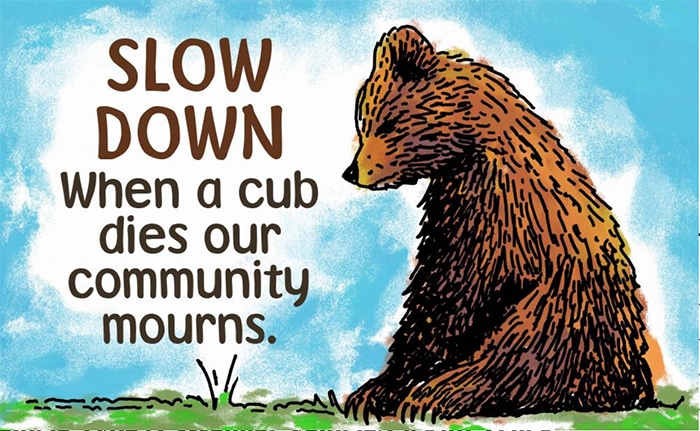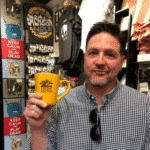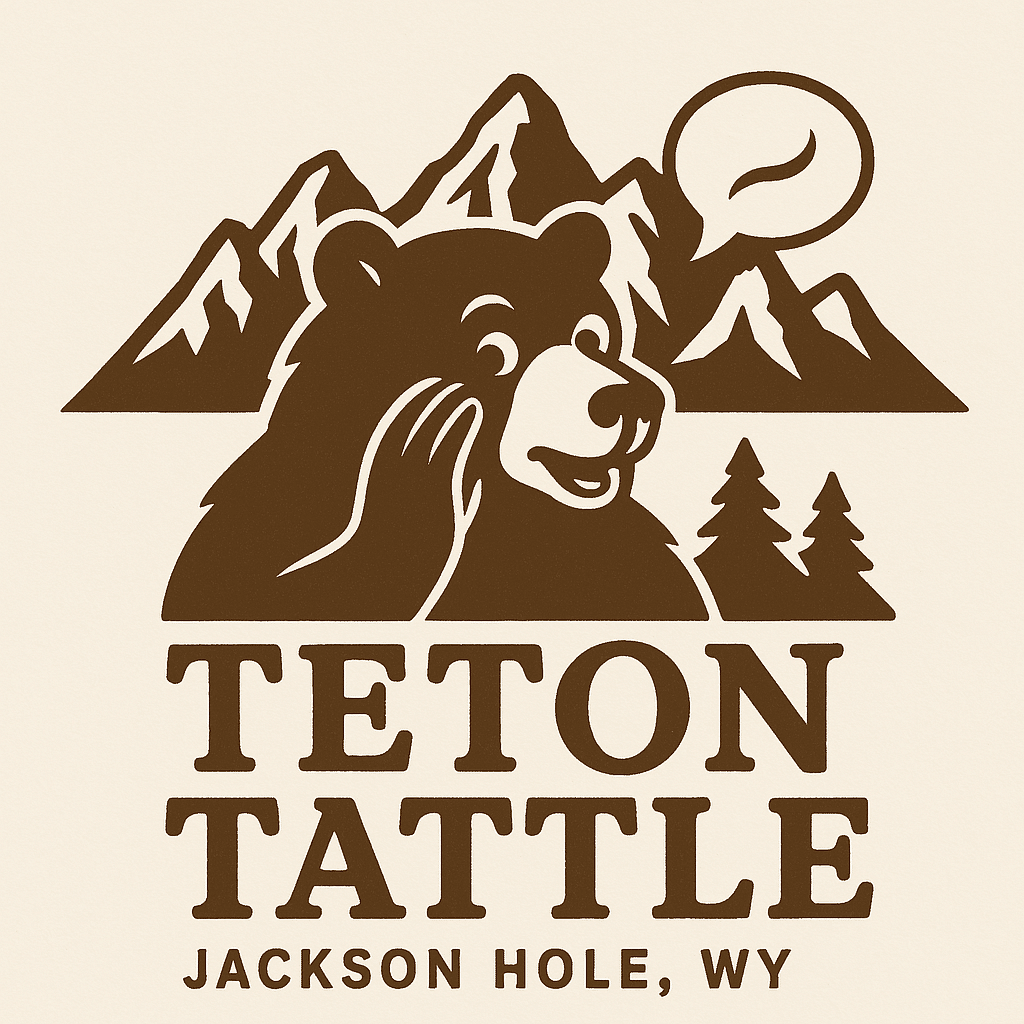Last fall, the Greater Yellowstone Ecosystem lost one of its most iconic residents: Grizzly 399. Her death in a vehicle collision outside Grand Teton National Park marked yet another tragic entry in a growing list of 51 grizzlies killed by vehicles since 2009.
In response, researchers from the University of Montana rolled up their sleeves and got creative. Their goal? To figure out if better-designed road signs could actually influence driver behavior and reduce wildlife-vehicle collisions.
The result: A groundbreaking study blending conservation science, design theory, and roadside reality, complete with custom-printed signs made in the field.
One standout design featured a storybook-style illustration of a sad bear cub with the message: “Slow down. When a cub dies, our community mourns.” This sign alone reduced the odds of speeding by 35% in high-risk bear corridors in Grand Teton National Park.

Another, more urgent sign, “Caution! Cub crossing ahead!”, was especially effective at curbing reckless drivers, cutting down the number of drivers going 15+ mph over the limit by 4–7 vehicles per day.
This was no slapdash effort. With funding from Jackson Fork Ranch and design support from University of Kansas professor Jeremy Shellhorn, the team tested combinations of imagery, language, and color in real-time. Their findings are now helping inform signage strategies nationwide through a new initiative called the Conservation Communication Collaborative (aka CC Co-Lab).
So next time you’re driving through a wildlife corridor, especially in the Tetons, remember that sad bear sign isn’t just a cute illustration. It’s backed by science, powered by purpose, and might just save a life.
📊 Want to see the data behind the signs?
- 35% reduction in speeding when the “sad bear” sign was used.
- 4–7 fewer reckless drivers daily thanks to “Caution! Cub crossing ahead!”
- Designs customized in the field based on daily traffic metrics and weather variables.
🖼️ Image Credit: UM’s Sad Bear Sign — now in use across the GTNP and the greater Yellowstone ecosystem.
AntlersArch founder and the voice behind Teton Tattle.





